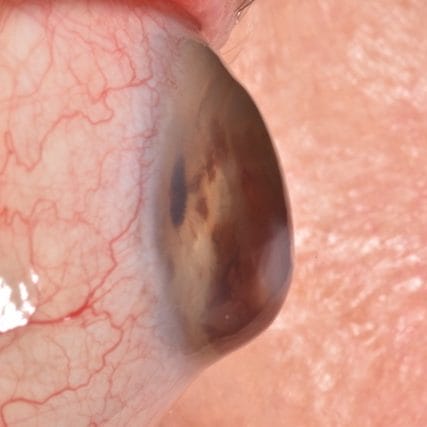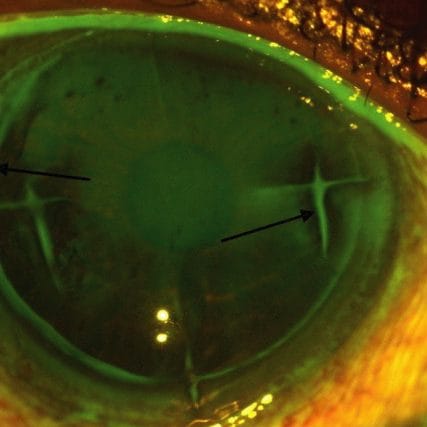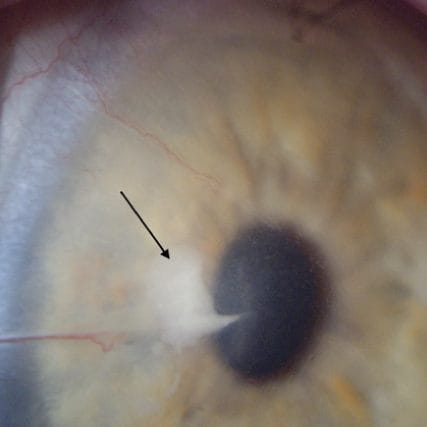7800 SW 87 AVE SUITE B-270 MIAMI, FLORIDA 33173
Contact Us
- Home
- Lasik Complications
Lasik Complications
LASIK, or Laser-Assisted In Situ Keratomileusis, is a surgical procedure designed to correct common vision problems, such as nearsightedness, farsightedness, and astigmatism. The surgery reshapes the cornea—the front surface of the eye—to improve visual acuity. Despite the popularity and widespread adoption of this procedure, it is not without potential complications, some of which may arise immediately after the procedure or several years later.
Complications stemming from LASIK surgery can include:
- Over or under correction of the visual error: The goal of LASIK surgery is to correct refractive errors in the eye, such as nearsightedness or farsightedness. However, if the procedure removes too much or too little corneal tissue, the eye's focusing power may be over or under corrected, respectively. This may result in continued dependence on corrective eyewear and, in some cases, necessitate additional surgery.
- Induced astigmatism due to a surgically distorted cornea: LASIK surgery requires the precise reshaping of the cornea. If there are irregularities in this process, it may result in induced astigmatism, which can blur vision.
- Issues with the LASIK flap: LASIK surgery involves creating a thin flap on the cornea's surface, which is lifted to allow for reshaping of the underlying corneal tissue. Complications can arise if the flap is not made correctly, if it's displaced, or if it doesn't adhere correctly after surgery. This can affect vision and may require additional treatment.
- Loss of vision which cannot be corrected with eyeglasses or contact lenses: In rare cases, LASIK surgery can result in a loss of visual acuity that can't be corrected with glasses or contact lenses, known as "best corrected vision."
- Visual aberrations: Some patients may experience halos, double vision, or glare, particularly in low light conditions. These are known as higher-order aberrations, and they can make tasks such as night driving difficult.
- Chronic dry eyes, burning, and ocular pain (corneal neuropathy): LASIK surgery can disrupt the nerves responsible for tear production, leading to chronic dry eye syndrome. This condition can cause discomfort, a sensation of grittiness or foreign bodies in the eyes, and, in severe cases, can affect vision.
- Post-LASIK corneal ectasia: This is a rare but serious complication in which the cornea progressively thins and bulges outward, distorting vision. Corneal ectasia can occur months or even years after LASIK surgery.
- Epithelial ingrowth: This occurs when cells from the cornea's surface layer (epithelial cells) grow beneath the LASIK flap following surgery. While often harmless and self-limiting, in some cases, it can lead to blurred vision or discomfort and require treatment.
Dr. Boshnick has developed a specialized approach to addressing these complications using scleral lenses. These large, gas permeable lenses are designed to vault over the compromised cornea, touching only the white part of the eye, or the sclera. The space between the back surface of the scleral lens and the front surface of the cornea is filled with a sterile saline solution, creating a continually moist environment for the cornea. This process assists in promoting comfort and fostering a healing environment for the cornea.
These scleral lenses are designed using computer technology to ensure a precise fit, and they effectively replace the distorted, compromised cornea as an optical surface, essentially providing a new, smooth refractive surface for the eye without additional surgery.
With this approach, the scleral lenses serve three primary functions:
- Protection: The scleral lens acts as a shield for the cornea, protecting it from the outside environment and any potential irritants.
- Healing: By providing a constantly moist environment, scleral lenses help promote the healing of the compromised corneal tissue.
- Vision and comfort: Besides facilitating healing, scleral lenses also help improve vision significantly and create a comfortable environment for the ocular surface.
Through this innovative use of scleral lenses, Dr. Boshnick is able to address many of the complications arising from LASIK surgery, enhancing patients’ visual acuity and comfort, and fostering corneal health and recovery.
Your Vision, Our Priority:
Schedule Your Consultation Now
Frequently Asked Questions
Common complications after LASIK surgery can include dry eyes, induced astigmatism, issues with the LASIK flap, loss of vision which cannot be corrected with eyeglasses or contact lenses, visual aberrations like halos and glare, post-LASIK corneal ectasia, and epithelial ingrowth.
Scleral lenses are specially designed to vault over the compromised cornea without touching it, instead resting on the white part of the eye (sclera). The space between the lens and the cornea is filled with sterile saline solution, providing a continually moist environment that promotes healing and offers comfort, while the lens itself replaces the distorted cornea as an optical surface.
Post-LASIK corneal ectasia is a rare but serious condition in which the cornea thins and bulges outward, leading to distorted vision. This can occur months or even years after LASIK surgery. Scleral lenses, which vault over the cornea and replace it as an optical surface, can provide an effective non-invasive solution for this complication.
The saline solution in scleral lenses maintains a moist environment for the front surface of the eye, which is crucial for promoting the healing of the compromised corneal tissue, and also offers comfort to the patient.
Yes, in fact, scleral lenses are often a good solution for those experiencing chronic dry eyes after LASIK. The saline solution between the lens and the cornea provides a continually moist environment that can alleviate dry eye symptoms.
The healing process can vary significantly among individuals depending on the severity of the corneal damage and other individual health factors. Regular follow-up appointments with the eye care provider will be necessary to monitor the healing process.
Yes, the design of scleral lenses allows them to replace the distorted, compromised cornea as an optical surface, helping to correct issues like halos, glare, and double vision caused by LASIK complications.
Schedule Your Consultation with
Dr. Boshnick
-
-
-
7800 Sw 87 Ave Suite B-270
Miami, Florida 33173




